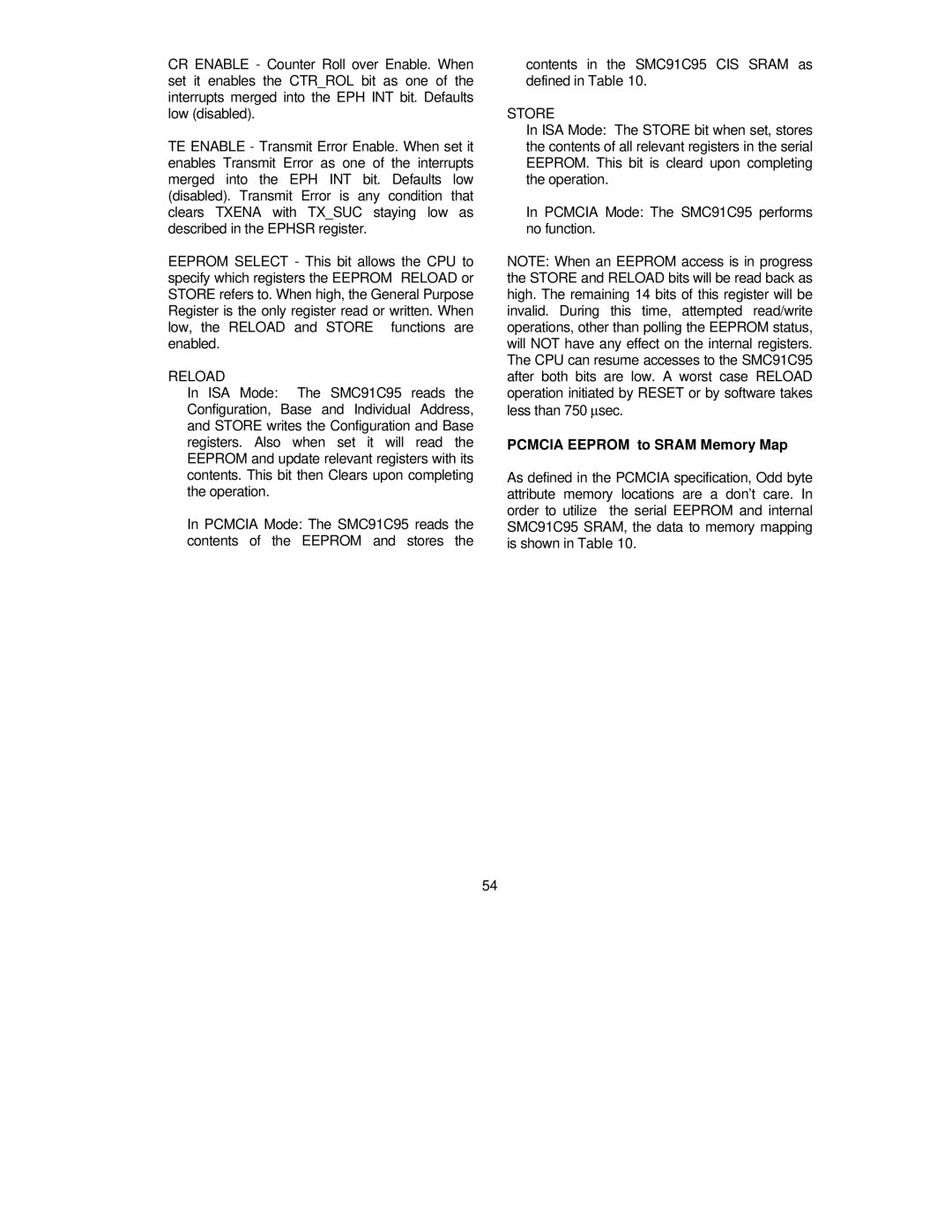CR ENABLE - Counter Roll over Enable. When set it enables the CTR_ROL bit as one of the interrupts merged into the EPH INT bit. Defaults low (disabled).
TE ENABLE - Transmit Error Enable. When set it enables Transmit Error as one of the interrupts merged into the EPH INT bit. Defaults low (disabled). Transmit Error is any condition that clears TXENA with TX_SUC staying low as described in the EPHSR register.
EEPROM SELECT - This bit allows the CPU to specify which registers the EEPROM RELOAD or STORE refers to. When high, the General Purpose Register is the only register read or written. When low, the RELOAD and STORE functions are enabled.
RELOAD
In ISA Mode: The SMC91C95 reads the Configuration, Base and Individual Address, and STORE writes the Configuration and Base registers. Also when set it will read the EEPROM and update relevant registers with its contents. This bit then Clears upon completing the operation.
In PCMCIA Mode: The SMC91C95 reads the contents of the EEPROM and stores the
54
contents in the SMC91C95 CIS SRAM as defined in Table 10.
STORE
In ISA Mode: The STORE bit when set, stores the contents of all relevant registers in the serial EEPROM. This bit is cleard upon completing the operation.
In PCMCIA Mode: The SMC91C95 performs no function.
NOTE: When an EEPROM access is in progress the STORE and RELOAD bits will be read back as high. The remaining 14 bits of this register will be invalid. During this time, attempted read/write operations, other than polling the EEPROM status, will NOT have any effect on the internal registers. The CPU can resume accesses to the SMC91C95 after both bits are low. A worst case RELOAD operation initiated by RESET or by software takes less than 750 μsec.
PCMCIA EEPROM to SRAM Memory Map
As defined in the PCMCIA specification, Odd byte attribute memory locations are a don’t care. In order to utilize the serial EEPROM and internal SMC91C95 SRAM, the data to memory mapping is shown in Table 10.
